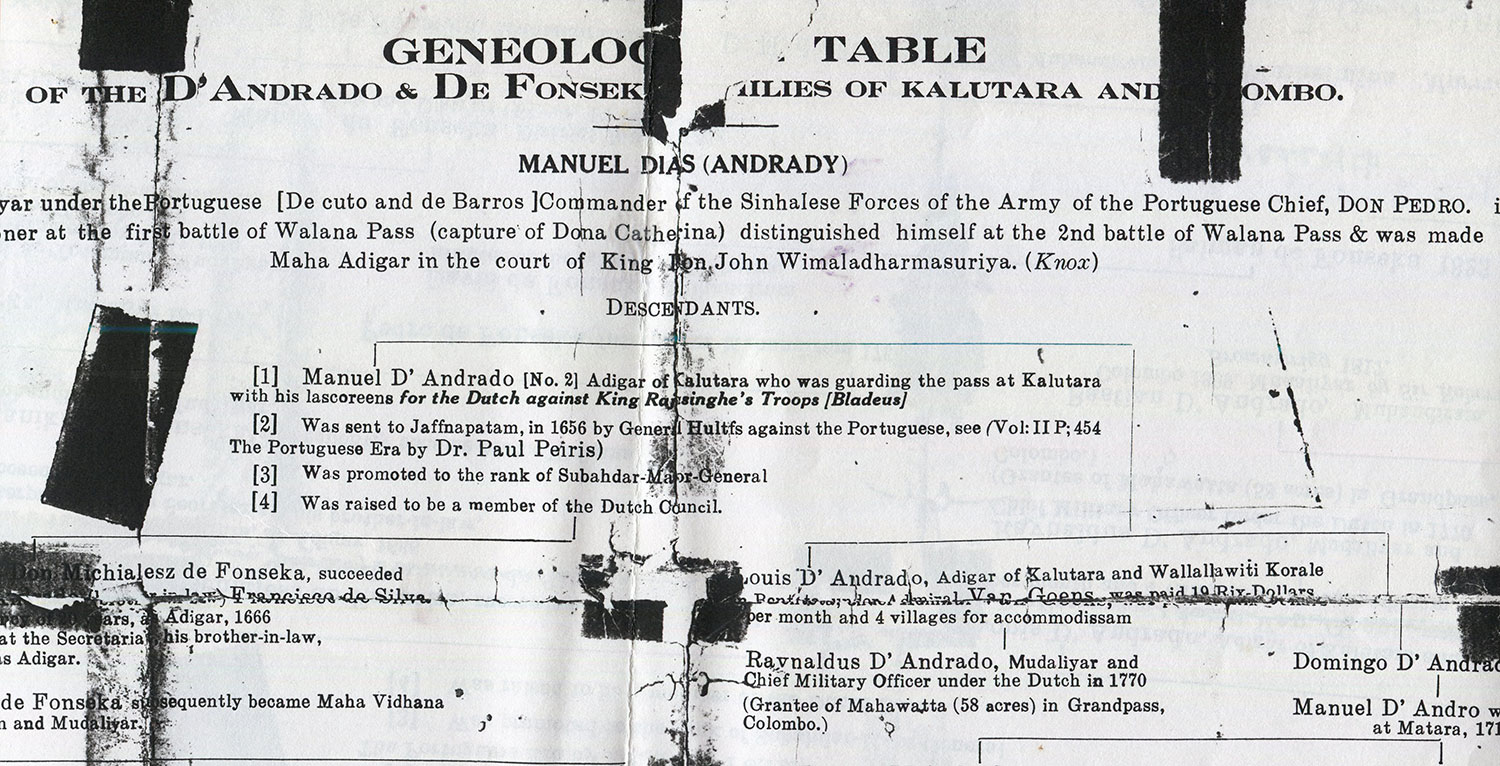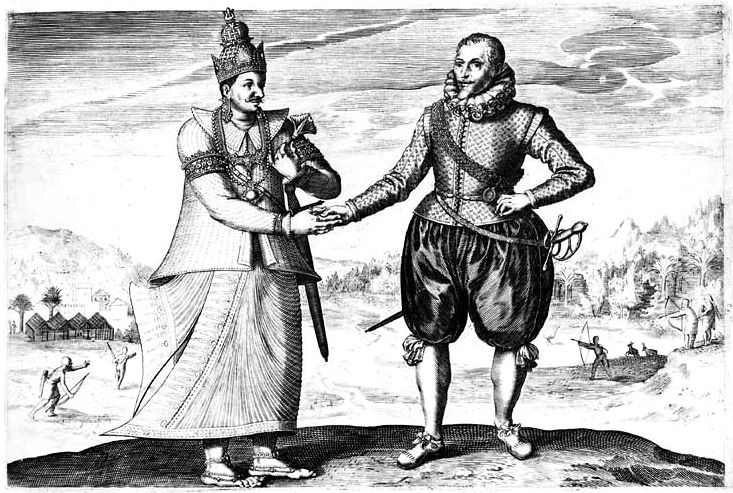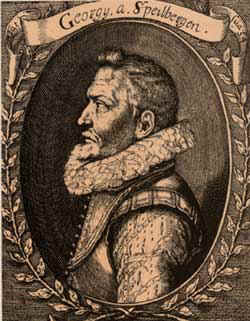The Genealogical Tables produced elsewhere in these ancestry pages document the family genealogy to 1658, a 340-year history. These were the last days of the Portuguese, and the recoded history by Baldaeus places both Manuel D’Andrado and Michael de Fonseka in Jaffna at that time, with the invading Dutch forces. Jaffna was the last bastion of the Portuguese. With the fall of Jaffna in August 1658, the whole of the Maritime Provinces came under the Dutch administration.
This ability to trace the documented genealogy back to 1658 gives the family great pride as it takes the family history to a period that is 200 years older than that of even the Royal Windsor family of England. The House of Windsor came into being in 1917, when the name was adopted as the British Royal Family’s official name by a proclamation of King George V, replacing the historic name of Saxe-Coburg-Gotha.
However there exist with the family, certain printed genealogical tables and other information, which if true will take us back further generations to 1545. The available evidence with their sources, is listed below.

Genealogy Table of the D’Andrado and De Fonseka families of Kalutara and Colombo.
MANUEL DIAS (ANDRADY) (Both Manuel D’Andrado and Louis D’Andrado are listed as his descendents.) ‘First Maha Mudaliyar under the Portuguese (De cuto and de Barros). Commander of the Sinhalese Army of the Portuguese Chief, DON PEDRO in 1545. Made prisoner at the Walana Pass (Capture of Dona Catherina). Distinguished himself at the 2nd battle of the Walana Pass and was made Maha Adigar in the court of King Don John Wimaladharmasuriya (Knox).’
The entry listed above is not included in the genealogy table prepared by S. R. de Fonseka and others (which have been reproduced in this website). This table is well researched and all sources of information, mostly from the National Archives, have been clearly listed. None other than E. Reimers, Government Archivist and Secretary Historical Manuscripts Commission has authenticated the documentation used for the preparation of the table.
In all probability it is possible that the compilers of the genealogy table (including S. R. de Fonseka), knew about Manuel Dias Andrady, but left it out as some serious errors as well as lack of any form of authenticating documentation exists.
The genealogy table in question places Manuel Dias Andradi to around 1545. Baldaeus and others document his descendant Manuel D’Andrado in the year 1658, a clear 113-year difference. If this were the case there would have been a generation in between. But no clear indication of this is given.
No attempt is made to corroborate and authenticate the relationship. The only fact used by the author seems to be the similarity in the names Dias Andrady and D’Andrado. In the original genealogy table, every relationship is authenticated by using documentation from the National Archives such as the Dutch land and school Thombos, letters of appointments, last wills, Indentures, other court documentations and published material. The table is also an incomplete tree covering only some branches of the family. Spelling errors such as Bladeus (for Baldaeus the historian) and Sabahdar (for Sabandaar, a Dutch title) shows the author’s unfamiliarity with the terms of that era.
This particular genealogy table therefore raises more questions than it attempts to answer. Who was this Manuel Dias Andrady ? How was he connected to the family? On top of this, questions also arise as to the identity of him.
Conflicting Identities:
The book ‘Kurukula Charithaya – Part II’ by A. S. F. Weerasuriya (1960) attempts to answer some of these confusions surrounding him. This following debate brings up the question of his identity. Was he a Portuguese or was he a Singhalese?
Authors such as Paul E. Pieris (‘Portuguese Era’) and Rev. S. G. Perera (‘History of Ceylon 1505-1796) and the Mahawansa (3rd Installment) introduces Don Manuel Dias as a Portuguese. However certain writers such as M. Dharmaratna (‘Gangapathi Vibhagaya’), Weligama Sri Sumangala (‘Itihasa Warnanawa’), Mudliyar F. E. Gooneratne (‘Dutch Times’) and editor of Dinamina, Alexander Welivita has identified him clearly as a Karava Singhalese.
” Don John Wimala Dharmasuriya of Kandy, did appoint a certain Manual Dias, his Maha Mudaliyar over the heads of all his Singhalese Officers & first fruits of his promotion was an attack in June on Corea, who he defeated with heavy loss.” (Dr. Paul E. Pieris ‘Portuguese Era’, Vol 1, Page 362).
The ‘Kurukula Charithaya’ goes on to say that he was a Singhalese of the Karava Caste who held high posts of Muhandiram, Mudaliyar and Adigar in the Portuguese-Dutch Ceylon and belonged to the Mudaliyar line of the Kalutara Maha Wallauwa. Historical books about this family of Kalutara indicate that they were the grand children of this great Don Manuel Dias Andrady.
Extracts taken from the book by Philalethes (‘History of Ceylon upto 1815) describing the arrival of the first Dutchman in Ceylon in 1602 is used to argue the case that he was a Singhalese. This book is based on Valentijn’s ‘Old and New East Indies’ which itself is based on the journals of Joris van Spilbergen. Here we look at the events as described in K. D. Paranawitana’s translations of the original works (1).
On the 5th of May, 1601, a fleet of three ships under the command of General Joris van Spilbergen set sail on a journey that will take them to Ceylon and Sumatra in present day Indonesia. He arrived off Baticaloa around end June 1602. On his arrival the King there suspected him to be a Portuguese. He had to convince the King that he did not belong to that race. The king received the General very cordially. Spilbergen handled the situation carefully to avert any possible danger. Ultimately, the king of Batticaloa had disclosed that he was only a regional ruler and the great Emperor was residing in Kandy. Then the General himself decided to visit the Emperor in Kandy.
 Spilbergen left Baticaloa on the 6th of July, 1602 and traveled thru Bintenne and had to halt close to Kandy. There he had to wait for about an hour as the King sent his chief Modeliar Emmanuel Dios and many other Portuguese. He was accompanied to the city and to his lodgings which were arranged in Portuguese fashion. It is said that in subsequent dealings, Spilbergen had difficulty explaining his Dutch identity as distinctly separate from that of the Portuguese, who were the enemies of the King. The King also questioned him in many ways about his religion and how it differs from the Portuguese etc. After exchange of gifts and letters Spilbergen arrived back at his ship, in the Baticaloa habour. On the 5th of August, Modeliar Emmanuel Dios from Kandy arrived with 120 soldiers. The Modeliar was shown every honor and brought on board the ship. On the 8th of August Spilbergen’s armada spots a Portuguese ship, sets sail and captures it. Seeing this the Modeliar was fully convinced that they were enemies of the Portuguese. Spilbergen also presents some weapons to the modeliar and the galliot with the cargo was presented to the King, upon which the Modeliar immediately sends a messenger to the King with the good news.
Spilbergen left Baticaloa on the 6th of July, 1602 and traveled thru Bintenne and had to halt close to Kandy. There he had to wait for about an hour as the King sent his chief Modeliar Emmanuel Dios and many other Portuguese. He was accompanied to the city and to his lodgings which were arranged in Portuguese fashion. It is said that in subsequent dealings, Spilbergen had difficulty explaining his Dutch identity as distinctly separate from that of the Portuguese, who were the enemies of the King. The King also questioned him in many ways about his religion and how it differs from the Portuguese etc. After exchange of gifts and letters Spilbergen arrived back at his ship, in the Baticaloa habour. On the 5th of August, Modeliar Emmanuel Dios from Kandy arrived with 120 soldiers. The Modeliar was shown every honor and brought on board the ship. On the 8th of August Spilbergen’s armada spots a Portuguese ship, sets sail and captures it. Seeing this the Modeliar was fully convinced that they were enemies of the Portuguese. Spilbergen also presents some weapons to the modeliar and the galliot with the cargo was presented to the King, upon which the Modeliar immediately sends a messenger to the King with the good news.
The argument presented in the book ‘Kurukula Charithaya’ is that if Manuel Dias was a Portuguese, he would have very clearly identified Spilbergen as a Non-Portuguese from the language and manner. He could not clearly identify Spilbergen’s Dutch identity from that of the Portuguese because he was a Singhalese. It was only after the General’s sloop captured a Portuguese galliot with 14 men that Manuel Dias was fully convinced of their identity.
Furthermore Manuel Dias also held ranks under the Portuguese controlled Kotte Kingdom, and was a Mudaliyar in the Kandyan Kingdom. The post of Mudaliyar has always been a title given to a Singhalese of rank. The Colonial rulers never adopted this title, at any time. The Portuguese and Dutch adopted the Singhalese name of ‘Disava’ for the administrative positions under the Governor, but history never records of any foreigner adopting the title of Mudaliyar. It is said that he was the first ever Maha Mudaliyar in the Kandyan Kingdom.
Spilbergens visit to Ceylon is very clearly translated by K. D. Paranavitana in his book ‘Journal of Spilbergen’. In the notes that accompany the text in Paranavitana’s book, the following is said of Manuel Dias.
Emmanuel Dios – Manuel Dias. Maha Mudaliyar of the King Wimala Dharma Surya I. He was a Portuguese soldier, captured as a young boy during Don Pedro Lopes de Sousa’s expedition to Kandy. He was brought up by Wimala Dharma Surya and made a Mudaliyar. He rose to a high position in the Kandyan administration and later even took part in trade negotiations with the Dutch envoy, Spilbergen.
Neither the above footnote nor Paul E. Pieris’s comments identify him directly as a Portuguese national. Although it implies that the Portuguese employed him as a soldier, or he was appointed over the Singhalese officers, it is not sufficient enough to conclude that he was Portuguese by birth. Also both these books also does not mention the word Andrady as part of his name.
The Chieftains of Ceylon, J. C. Van Sanden
This book by Van Sanden is important for the information it gives about the low country Chief Headmen of the past. It gives the following entry under the record of Mudaliyar S. R. de Fonseka. This listing places Manuel D’Andrado as a direct descendent of one Don Pedro. Comparing this entry with the above Genealogy Table, it is clearly evident that the name of Manuel Dias (Andrady) has been mistakenly treated as Don Pedro.
‘The family claims descent from Don Pedro, a Chieftain, in Portuguese times who is said to have become Maha Adigar in the Court of King Wimala Dharmasuriya. His people obviously went over to the Dutch, for we find Don Pedro’s son, Manuel D’Andrado, Adigar, Kalutara, taking up arms against the Portuguese on behalf of the Dutch, and even fighting against the Sinhalese King.’
Don Pedro was the Captain General of the Portuguese at the battle of Balana, where Wimala Dharma Suriya of Kandy captured and later married Dona Catherina. Don Pedro was the a Portuguese General who was killed in this battle. He had a youthful officer called Manuel Dias with him, who was taken prisoner by the King to serve him in Kandy. This was a time of great intrigue. Manuel Dias then served Wimala Dharma Suriya’s camp as a brave soldier with intelligence and skill. Due to his gallantry, the King later appointed him to the high office of Maha Mudaliyar.
Conclusion:
Therefore the question of Manuel Dias Andradi will remain in the background till more concrete evidence is found linking him with the family. If proved correct this will push back the historical time frame to within 53 years after Columbus’s discovery of America.
The allure therefore, of extending the family history further back by 113 years remains even to date, as it would have been at the time this particular genealogy table was compiled.
(1) Journal of Spilbergen – The first Dutch envoy to visit Ceylon 1602. Translated by K. D. Paranavitana 1997
